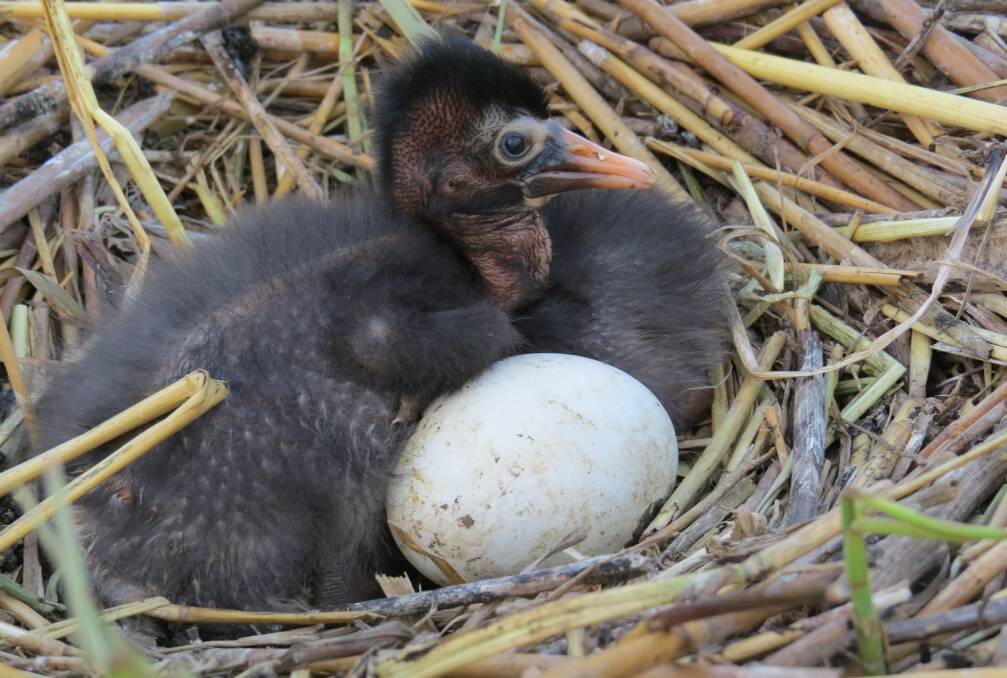
WET conditions in local wetlands are continuing to provide perfect breeding conditions for waterbirds.
Subscribe now for unlimited access.
$0/
(min cost $0)
or signup to continue reading
Following a successful nesting phase over the last few weeks, wetlands are now providing homes for some welcome new residents - chicks.
Colonies of straw-necked ibis (also known as the Farmer's Friend), white ibis and royal spoonbills have been busy trampling lignum, reeds and sticks to create cosy homes for brand-new chicks in the Lowbidgee, between Hay and Balranald.
With new nests established, thousands of chicks are beginning to hatch, forming the next generation of waterbirds in the Murray-Darling Basin.
Once chicks hatch, both parents work hard to raise them through their 50-day "nestling" period. This is the time it takes for them to develop before they become fledglings and leave the nest, like a teenager moving out of home.
There are a few main stages of chick development, each with their own endearing nickname.
When they first grow their flight or "pin" feathers, they are called "squirters". When they start walking, they are "runners".
When they work out how to flap their wings, they are "flappers" and when they begin to fly, they are "flyers" before finally leaving the nest as "fledglings".
To keep an eye on the chicks throughout these stages, scientists from the Commonwealth Environmental Water Office's monitoring program from Charles Sturt University, the University of NSW and the Department of Planning, Industry and Environment, are regularly visiting nesting sites.
They check on the health of the chicks, what stage they're at, how many there are and other things such as water quality and abundance of food.
IN OTHER NEWS:
That way we can learn how to deliver water for the environment when and where its need to better support chicks as they grow.
While some small breeding events occur each year, the wet conditions mean it is shaping up to be a huge season for waterbird breeding.
This will help to restore waterbird populations which have declined significantly over the past 30 years.
The large-scale inundation of Murrumbidgee wetlands required to trigger mass bird breeding events doesn't occur as often or last as long as it once would have before river regulation.
So, while birds may still breed, if water-levels drop too quickly or wetlands dry out prematurely, birds will often abandon their nests.
"Water for the environment" can be used if required, to ensure the birds stay on their nests until their fledglings are ready to leave home.
Environmental flows can be used to top-up wetlands, maintain a steady water level and provide feeding areas to help maintain breeding conditions long enough for chicks to complete their growth stages and finish what nature has begun.
Such flows also refresh water quality and reduce risk of disease in such dense colonies.
Keep an eye out for more updates on how breeding waterbird colonies are progressing.
Our journalists work hard to provide local, up-to-date news to the community. This is how you can access our trusted content:
- Bookmark www.irrigator.com.au
- Make sure you are signed up for our breaking and regular headlines newsletters
- Follow us on Twitter
- Follow us on Instagram
- Follow us on Google News


